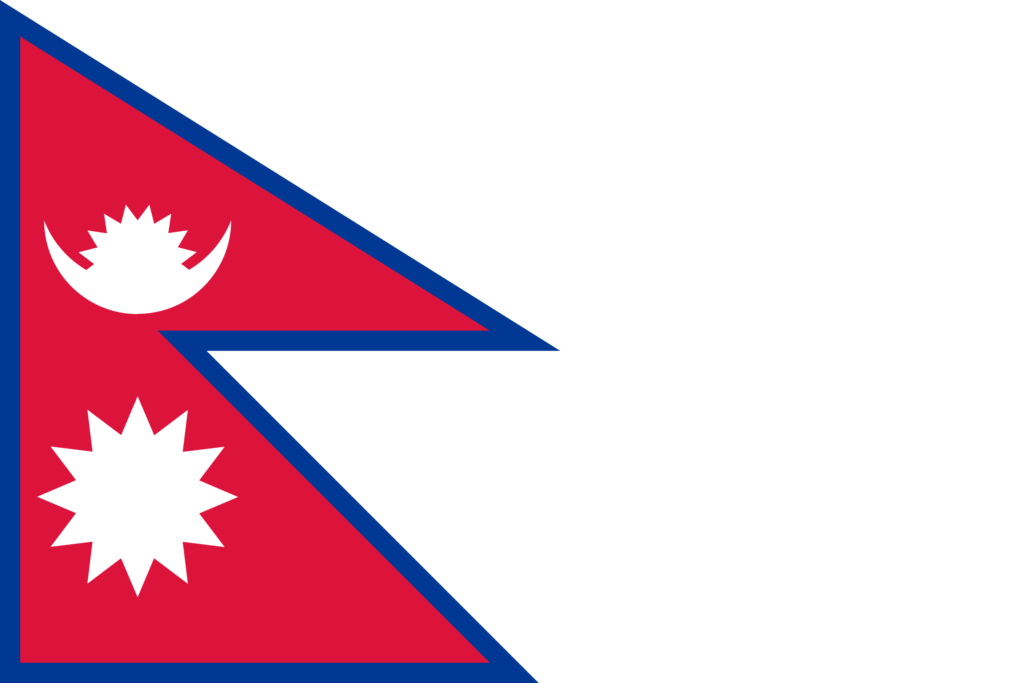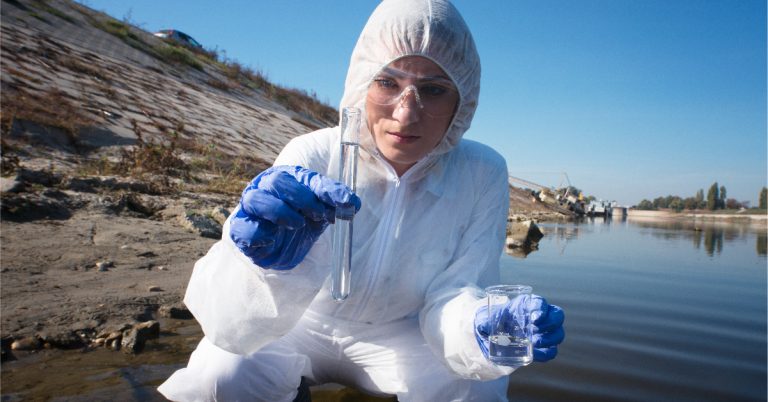Water is the backbone of life, yet in Nepal, the increasing levels of water pollution are posing serious threats to both humans and the environment. From the bustling urban sprawl of Kathmandu to the tranquil rivers flowing from the Himalayas, water bodies across the country are facing contamination due to rapid urbanization, untreated sewage discharge, industrial effluents, agricultural runoff, and a lack of proper waste management. In this blog, we’ll explore what are the effects of water pollution, especially its impact on human health, marine ecosystems, and the broader environment in Nepal.
What Are the Effects of Water Pollution?
Water pollution occurs when harmful substances like chemicals, waste products, and pathogens contaminate rivers, lakes, or groundwater. The effects of water pollution can be far-reaching, damaging not only aquatic ecosystems but also threatening the health and livelihoods of communities that depend on these water sources. In Nepal, where a significant portion of the population relies on rivers and springs for drinking, cooking, and farming, the risks are even more pronounced.
8 Effects of Water Pollution in Nepal
To understand the gravity of the situation, let’s look at the 8 key effects of water pollution observed in Nepal:
- Waterborne Diseases: One of the most immediate effects of water pollution on human health is the spread of diseases like cholera, typhoid, dysentery, and hepatitis. Contaminated water is a breeding ground for bacteria and viruses, particularly in densely populated urban areas lacking proper sanitation.
- Contaminated Drinking Water: In rural Nepal, many communities still depend on untreated surface water or shallow wells. Industrial waste and pesticides often seep into these sources, making drinking water hazardous. This has long-term effects on human health, especially among children and the elderly.
- Loss of Biodiversity: Aquatic life, including fish and amphibians, suffers significantly due to polluted waters. Toxic substances like heavy metals and plastics accumulate in rivers and lakes, disrupting ecosystems and leading to species decline.
- Impact on Agriculture: Farmers use water from polluted rivers for irrigation, unknowingly introducing contaminants into the soil and food chain. This not only affects crop quality but also contributes to the harmful effects of water pollution on human health through food consumption.
- Economic Losses: Tourism and fisheries are major income sources in Nepal, particularly in areas like Pokhara and the Terai region. Water pollution reduces fish populations and deters tourists, directly affecting local economies.
- Damage to Cultural and Religious Sites: Rivers like the Bagmati are considered sacred in Nepal. However, they are now heavily polluted, diminishing their religious significance and posing health risks to those who participate in rituals and ceremonies.
- Eutrophication of Lakes: Excessive nutrients from agricultural runoff and untreated sewage cause algal blooms in lakes such as Phewa and Rara. These blooms deplete oxygen levels, harming aquatic life and turning once-pristine water bodies into toxic zones.
- Climate Change Vulnerability: Polluted water sources limit the adaptive capacity of communities facing the effects of climate change. Clean water is crucial for disaster resilience, especially in a mountainous country like Nepal, where floods and landslides are frequent.
Effects of Water Pollution On
- Human Health
The effects of water pollution on human health cannot be overstated in a country like Nepal, where many people lack access to treated water. Long-term exposure to contaminated water can lead to chronic illnesses such as cancer, neurological disorders, and reproductive issues. In urban slums and rural communities alike, the absence of reliable sanitation and wastewater treatment exacerbates these health risks. Children are especially vulnerable, with polluted water contributing to high rates of diarrhea and malnutrition.
Moreover, the economic burden of water-related illnesses is significant. Families are often forced to spend a large portion of their income on healthcare, missing work or school in the process. Thus, the effects of water pollution on human health create a vicious cycle of poverty and illness.
- Environment and Marine Life
While Nepal is a landlocked country and lacks access to oceans, it has numerous rivers, lakes, and freshwater ecosystems that sustain diverse forms of marine and aquatic life. The effects of water pollution on the environment are evident in declining fish populations, vanishing amphibians, and invasive species outcompeting native ones. Polluted waters disrupt the food chain and weaken the resilience of ecosystems to adapt to environmental changes.
The wetlands of the Terai, for example, are vital biodiversity hotspots. Pollution here not only endangers animal species but also reduces the quality of groundwater recharge and natural flood control mechanisms. These effects highlight how closely linked environmental health is to water quality.
Combating the Harmful Effects of Water Pollution in Nepal
To address the harmful effects of water pollution, a multi-pronged approach is needed:
- Strengthening waste treatment infrastructure in urban and industrial areas.
- Educating communities on proper waste disposal and water hygiene.
- Implementing stricter regulations on industrial discharge and agricultural runoff.
- Promoting eco-friendly tourism and sustainable agriculture to reduce environmental damage.
- Investing in water purification and affordable household filtration technologies.
With proper intervention, many of the effects of water pollution can be reversed or minimized, improving the quality of life for millions in Nepal.
Ion Exchange’s Vital Role in Combating Water Pollution
Ion Exchange, a leader in water treatment solutions, has been instrumental in combating water pollution globally. By providing advanced water treatment technologies and systems, Ion Exchange helps to improve water quality and reduce the prevalence of diseases caused by water pollution. Their solutions include innovative water purification systems that remove contaminants from drinking water, making it safe for consumption.
INDION Lampak, developed by Ion Exchange, is a compact, modular unit designed to meet the drinking water needs of communities and industrial applications. It integrates a pump, static mixer, flocculator, lamella clarifier, gravity sand filter, and chemical dosing systems to produce disinfected water with less than 5 mg/l TSS from feed water containing up to 500 mg/l TSS. INDION Lampak is easy to operate, requires minimal maintenance, and can be powered by a diesel generator or renewable energy, making it ideal for areas without electricity. Its lightweight, corrosion-resistant materials and space-efficient design ensure easy transport, operation, and maintenance.
It effectively removes dissolved iron from feed water, which is commonly present as ferrous bicarbonate in groundwater. This advanced filter uses a catalytic oxidation process, eliminating the need for chemicals and ensuring that the treated water contains less than 0.3 ppm of iron. Designed for convenience, the NGIRF features a corrosion-resistant construction with a Fiber Reinforced Plastic (FRP) pressure vessel and PVC pipes. It is pre-assembled, tested, and equipped with user-friendly valves, making it a reliable and easy-to-operate solution for treating water with high iron content.
-
INDION Water Potability Test Kit
The INDION Water Potability Test Kit is a comprehensive tool designed to measure the eight crucial chemical parameters of drinking water as specified by the Bureau of Indian Standards. This user-friendly kit provides accurate and quick results for pH, total hardness, alkalinity, chloride, fluoride, chlorine, iron, and nitrate. Ideal for use by semiskilled individuals, it offers an affordable solution for ensuring safe drinking water.
Decentralized sewage treatment solutions, like the INDION, Packaged Sewage Treatment Plants, are designed as compact, single-tank units that generate low sludge volumes and require minimal electricity, making them highly cost-effective. These systems are available in capacities ranging from 10 to 100 m³/d, and for larger needs, advanced options using Fluidized Media Reactor (FMR), Moving Bed Biofilm Reactor (MBBR), and Membrane Bio-Reactor (MBR) processes are offered to handle higher flow rates efficiently.
Conclusion
The effects of water pollution in Nepal are far-reaching, affecting human health, the economy, biodiversity, and the cultural fabric of the nation. From the water you drink to the food you eat, polluted water leaves no aspect of life untouched. Understanding what are the effects of water pollution is the first step toward building a healthier and more sustainable future for Nepal.


